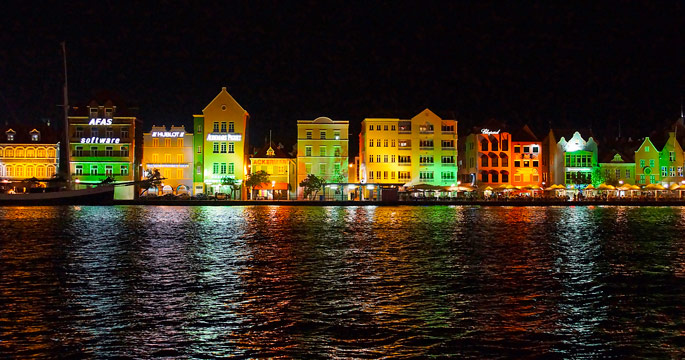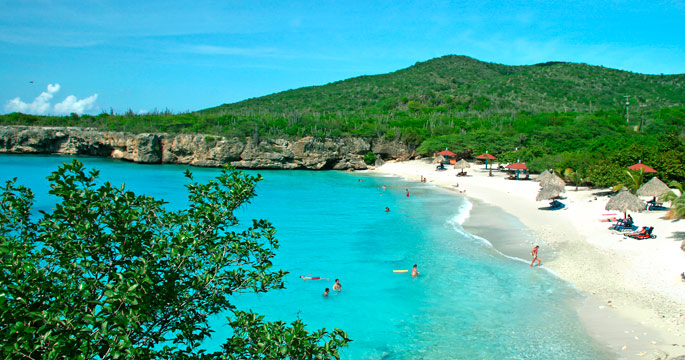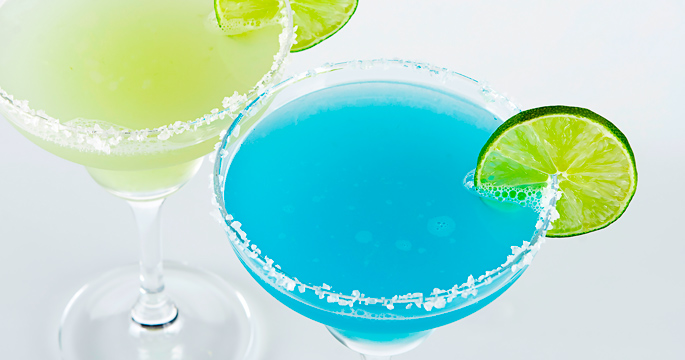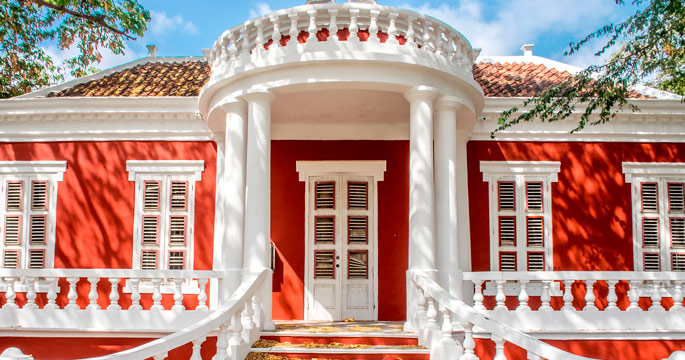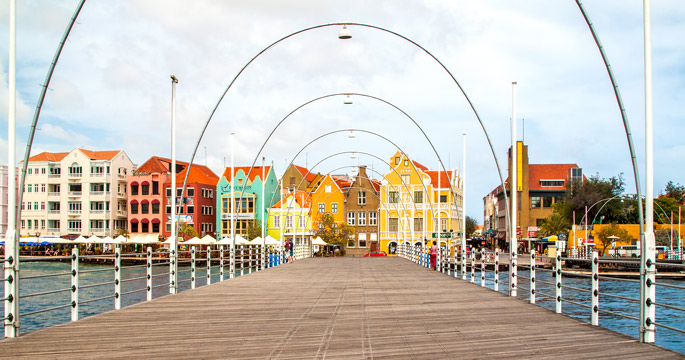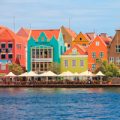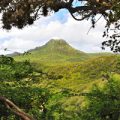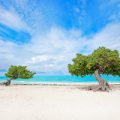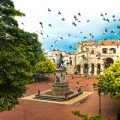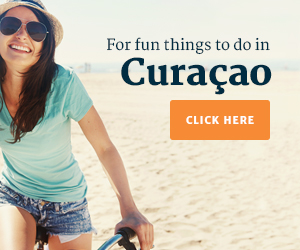Too long overlooked by travelers who perceived it as just a regional commercial center, Curacao has reinvented itself as a vacation destination and now competes with the Caribbean’s best. In addition to sun and sea, the island offers one of the most intriguing cultures in the region, blending the vintage flavors of Europe with a dash of Caribbean spice, and combining a rich and diverse history with vibrant and hip social, art and culinary scenes. Here are just some of the reasons why Curacao is one of our favorite Caribbean islands.
1 A Touch of Dutch
Like the other members of the ABC island group, Aruba and Bonaire, Curacao has a longstanding connection to Holland. Though the island gained autonomy in 2010 as a constituent country, Dutch culture remains an integral part of the island’s heritage and lifestyle. Stores are filled with imports from the Netherlands, street signs are displayed in Dutch and open-air cafes are filled with chic patrons sporting the latest European fashions, conversing in a half dozen languages. You might think you are in Amsterdam, were it not for the blue skies and warm sunshine.
2 Free Trade
Curacao’s emergence as a commercial hub dates back to the Colonial era, when the Dutch West India Company promoted trade between the home country and the Caribbean. More recently, Holland’s progressive attitude toward duty-free trade transformed Curacao into the commercial center it is today. The storefronts along Heerenstraat and Breedestraat streets display designer clothes, Italian silk and Holland’s famous blue Delft pottery. A swanky new shopping district in Otrobanda is the place to load up on linens, perfumes, diamonds, emeralds and rubies. And don’t forget to purchase a wheel of Edam cheese; the 5-pound size will last till your next trip.
3 Libations Blue and Green
If you order drinks tinted green or blue, chances are they are doused with a shot of Curacao Liqueur. This famed spirit, known as “The Genuine Curacao Liqueur,” traces its island roots back to 1896. This elixir derives its unique flavor from the infusion of the dried peel of the laraha fruit, which is similar to an orange. The spirit is still made at a small on-island distillery that follows the original recipe. Over the years, new variations have also been created through the addition of extras such as chocolate, coffee and rum raisin, but the original blue and green varieties remain the most popular.
4 Floating Market
Though Curacao’s arid landscape is not conducive to farming, fresh fruits and vegetables are in abundant supply, thanks to a fleet of small trading vessels that make the 36-mile crossing from Venezuela laden with fresh produce. These colorful craft tie up along the Willemstad waterfront, offering a wide range of goods grown in the rich soils of the mainland. In years past, sailors would sell their cargoes right from the decks of their vessels. Most now offload their goods to adjacent open-air stands along the wharf, providing a steady supply of fresh food and a lively shopping experience.
5 United Nations
Curacao’s cultural tapestry welcomes influences from three continents and more than 50 nationalities to the mix. You’ll most likely hear Dutch, English and a local dialect known as Papiamento spoken as you stroll down the cobblestone streets, but Venezuela is just over the horizon, and Hispanic influences have flavored the island’s taste in cuisines, music and sport, as well as encouraging a gregarious social attitude. One additional cultural influence that has shaped Curacao’s culture for many years is the legacy of Portuguese Jews, who first arrived on the island in the mid-1600s.
6 Hidden Beaches
At first glance you wouldn’t think this rocky windswept island would have much to offer in the way of beaches. But a closer look reveals hidden coves tucked between headlands of fossilized coral, where soft golden sands beckon you to lay down a towel and spend the day. There are 38 beaches scattered around the island, and the southwestern coast is where you’ll find the majority with calm, crystal clear water. For a livelier day on a more expansive strand, follow the crowds to the island’s hot spot, Mambo Beach. The islands longest and most popular stretch of sand, it is flanked by a variety of seaside taverns and eateries.
7 Sapphire Blue Waters
Curacao is rimmed by a shallow coastal shelf that soon drops into deep water along coral- covered walls. This underwater landscape places prime diving and snorkeling sites very close to shore, especially along the island’s southern coast, which is sheltered from prevailing swells and trade winds. Many coral reefs are within swimming distance of the beach, or just a short boat ride away. Fishermen also appreciate the proximity of blue water, and are able to drop their lines and begin the hunt for trophies soon after departing the harbor.
8 Authentic Architecture
Stroll the cobblestone streets of Willemstad’s Punda district, with tall, narrow buildings looming overhead, and you might think you were in the old country. The giveaways are the colorful, multi-hued shades of the walls and the predominance of red tile roofs. The tradition of building up rather than out came to the island with the first wave of Dutch builders, based on the practice of taxing buildings according to street front width rather than height. Today, the centuries-old structures of this extensive and authentic historic district are recognized as a UNESCO World Heritage City.
9 Local Flavors
The menus of Curacao include not only a wide range of international flavors, but some unique to the island. The favorite local dish known as keshi yena is made by stuffing a shell of Edam cheese with spiced meats. Local land animals also made their way into island kitchens and show up in savory dishes such as sopa yuana (iguana soup). There is funchi, a corn bread polenta, and during the Christmas holidays residents spend days making ayaka, a tamale-type entree of Venezuelan origin that places spiced beef or chicken in an envelope of cornmeal pastry that is wrapped in plantain leaves and boiled.
10 Celebrations of Life
Island residents are always up for a party, and there are ample opportunities throughout the year to mingle and celebrate. Plan your trip around Carnival, Heineken Regatta, Curacao Dive Festival or even the annual Amstel Curacao Race, which is a local equivalent of the Tour de France. For music lovers the big event is the Curacao North Sea Jazz Festival, while the Salsa Tour and Tumba Festival are equally appealing.

